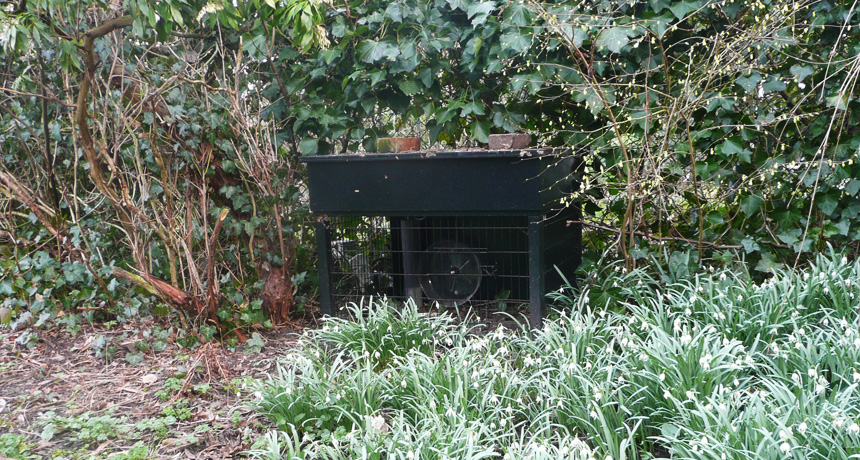Mice really do like to run in wheels

Scientists put a cagelike structure in a green urban area with a running wheel inside. A camera captured wild mice, shrews and other animals running on the wheel.
© 2014 Johanna H. Meijer and Yuri Robbers; Proc. Royal Soc. B 2014
- More than 2 years ago
Give a mouse a wheel, and he’ll be sure to run. Lots of scientific studies have depended on that behavior to test the effects of exercise on health. There’s been some concern, though, that wheel running is not a natural behavior and thus not a good stand-in for human exercise. Maybe the captive mice are just acting out a neurosis, the thinking goes.
But it turns out that even though the wheel may not be natural for mice, wheel running is. When scientists stuck a wheel out in nature, wild mice ran on it just like their captive counterparts do. And so did several other wild creatures. The finding was published May 20 in the Proceedings of the Royal Society B.
Johanna H. Meijer and Yuri Robbers of Leiden University Medical Center in the Netherlands put running wheels in a cagelike setup that small animals could easily enter and exit. The cages were placed in a green urban area and out of the way in a dune area not accessible to the public. A motion sensor activated a camera equipped with night vision. And some food was left to attract wildlife.
Over a period of three years, the researchers collected more than 200,000 recordings at the two sites and analyzed more than 12,000 video fragments. Those videos captured not only mice running on the wheels but also rats, shrews and frogs, and even slugs slowly moving along.
The researchers could see that some of the wheel movement was unintentional. But other times, the animals would stop running, get off the wheel, then get back on and run some more. That indicated that running was probably an intentional activity, Meijer and Robbers write.
Mice mostly ran for a minute or less, but a fifth of the time, they ran for longer. One even stayed on the wheel for 18 minutes. That’s comparable to what 200-day-old mice do in the lab.
And the animals weren’t just running for the food. For the last year of the experiment, the researchers stopped leaving food in their mini-playground. The critters still showed up, though in fewer numbers than before.
Why mice and other animals will voluntarily run on wheels isn’t yet known. But then again, I find it a bit of a mystery why humans will happily run on a treadmill and eschew the beautiful world outdoors. To each their own, I guess — even mice.
ON THE RUN Scientists in the Netherlands put running wheels into cagelike structures in natural environments, with cameras watching. Wild mice, frogs, slugs and other creatures checked out the wheels and started running, hopping and crawling inside. CREDIT: © 2014 Johanna H. Meijer and Yuri Robbers






